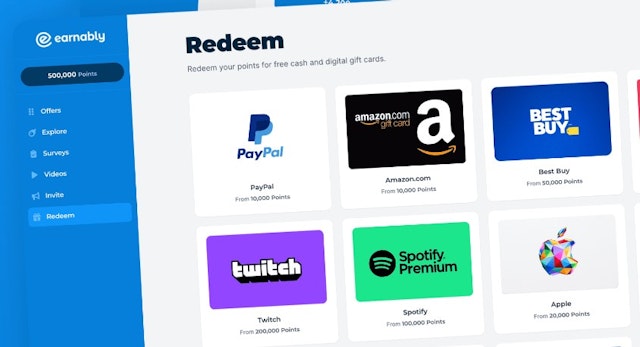These companies are paying people to watch ads. Can the model work?
There’s been a boom in companies rewarding consumers for watching ads. The Drum explores what’s driving the trend.

As users become more aware of the value of their own data, what new opportunities for marketers are emerging? / Arteum Ro
The saying goes ‘if you’re not being sold anything, you are the product’. It’s a mantra the public is increasingly aware of. As a result, the public has become more aware of the value of their own data. GDPR and more have demonstrated that their online activity has value.
A survey by Datagrail claims 75% of US consumers know companies sell their data to third parties. It attributes that rise in awareness to the Cambridge Analytica scandal and notes that 85% of respondents would like to know which businesses are collecting data about them and how they use it. The issue is compounded by conflation with privacy issues. A survey conducted by Cisco saw 33% of customers have moved on from companies – including banks, social media and stores – due to privacy concerns.
The value proposition has shifted as the public grows more digitally savvy. In response, companies like WeAre8, Slice the Pie and Earnably are seeking to reward users for their time and data to take advantage of the disruption. It’s far from a new idea, with consumers having been paid to provide feedback on ads and fill in surveys for decades. Now, the advent of digital wallets has brought the practice back into vogue.
Advertisement
Ryan Davies is founder of Earnably, a platform that offers users cash via Paypal and gift cards in exchange for feedback via surveys. He explains that the modern advertising ecosystem has the public reappraising its position within it: “More and more users want to be rewarded for their time online to take back control of how their data is used. Ads are everywhere these days, and traditional online ads don’t directly benefit users. Modern users are savvy and know that their data has a value that they can earn from (and advertisers are desperate for). We’ve seen our usage increase massively since the cost of living crisis, as users are looking for more unconventional methods to top up their income.”
Honesty and scalability
From an advertiser’s perspective, the transaction is more honest. Rather than the implied compact between internet users and ads, which has led to phenomena like ad blindness, these companies are citing ever higher engagement and attention. WeAre8, for example, argues that the fact users elect to choose when they view ads necessarily means that recall is much greater.
It also argues that allowing users to view ads on their own terms increases efficiency, which cuts down on carbon costs. For those brands seeking to avoid accusations of greenwashing, that can potentially be a huge selling point to consumers and brands alike. While none of the schemes share CPMs explicitly, they universally argue for greater efficiency in spend.
Many of the schemes do not pay money directly and instead provide rewards in the form of cashback shopping or affiliate schemes. WeAre8, a social platform that also rewards users for their time appraising ads, makes charitable donations a core part of its rewards scheme, for example.

Andre Leb is SVP international at Prodege, which runs Swagbucks, a similar scheme to those above. He explains that consumer habituation to gamification and digital gifting, which has been prevalent in mobile apps for a decade now, has removed much of the reticence that the public had around similar schemes.
There is, however, a ceiling on the extent to which enterprises like Swagbucks can reward users and still have it be worth the while for advertising partners. Only the advertisers can answer how much a full engagement with someone in their target audience is worth. Leb explains: “There is certainly a cap on how much each person can be awarded in theory – for example, doctors and executives get paid more for responding to surveys than stay-at-home parents.
Advertisement
“The newer trend is to pick up signals from users based on searching and other behaviors that can be observed online - there is an entire marketplace that buys and sells these signals in the hopes that it will be converted into a purchase someday.”
Davies believes that, as the trends underpinning the reappraisal of the value of user data continue, more consumers and advertisers will seek more direct means of rewarding consumers for viewing ads and completing surveys: “Over half of our users are using mobile (rather than desktop devices) and we’re currently focusing our attention on mobile apps in the space. There is no ceiling on how much value can be delivered. More campaigns and market research opportunities will be made available as audience sizes increase, and there are no signs that the space is slowing down.”
The stable door is open when it comes to user concerns about their own data. As more people become aware of the value they provide in the digital advertising ecosystem, more opportunities for them to be proactive in providing data to advertisers will emerge.

